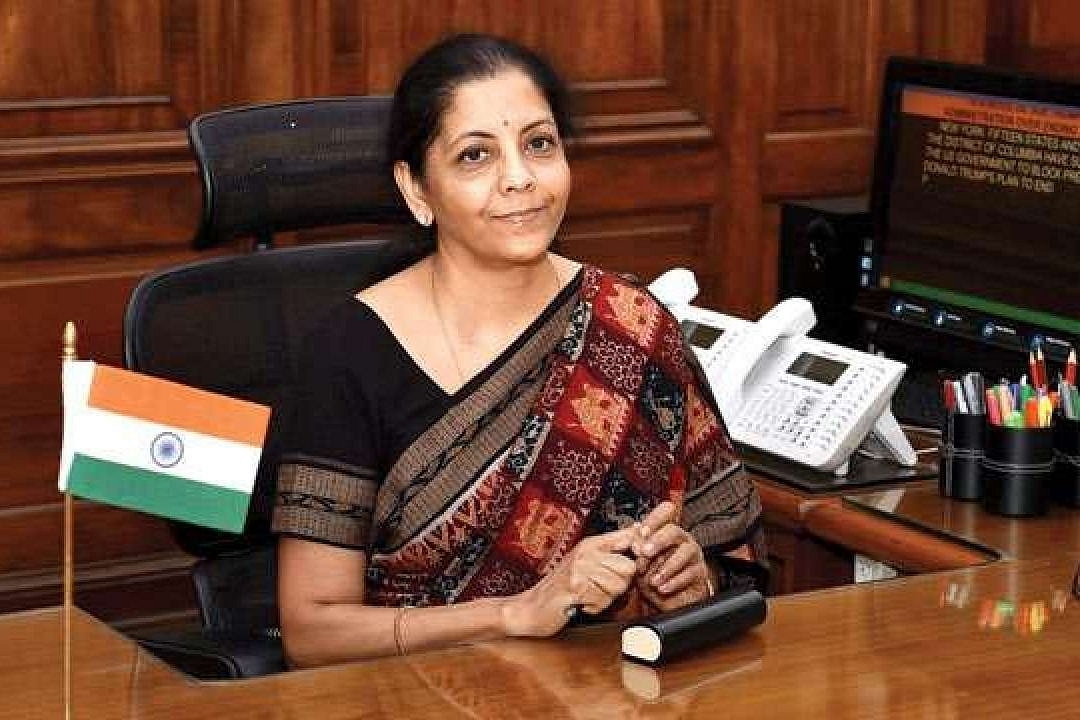Economy
Finance Minister Sitharaman Should Declare A Fiscal Holiday In 2019-20 And Focus On Growth
- When growth is the issue, more spending is what is called for by the government, not less.
- It would be unwise for Sitharaman to stick to the fiscal road map. She should reset it and begin the glide path from 2020-21.

Finance Minister Nirmala Sitharaman.
If Finance Minister Nirmala Sitharaman is to address all the key challenges facing the Indian economy in her forthcoming budget – growth, jobs, exports, and weakness in the financial sector – she will have to accept one big risk: of letting the fiscal deficit target slide to where it will this year.
The interim budget put the fiscal deficit at 3.4 per cent, but the deep slippages in revenue collections last year – more than Rs 1.6 lakh crore from budget estimates – have ensured that many of the bills due last year (2018-19) have been left unpaid. These bills have to be paid this year, and are probably being paid, as evidenced by the fact that over 52 per cent of the deficit target for 2019-20 was used up in just April and May.
If one were to add up the unpaid bills of 2018-19 – expenses that were temporarily shifted to public sector companies like Food Corporation, Nabard and National Housing Bank – the real fiscal deficit of 2018-19 will probably be closer to 4 per cent. That’s roughly where the Modi government began its tenure in 2014-15.
This suggests that in the budget to be presented by Sitharaman on 5 July, the slippage will have to be acknowledged and shown to be much higher than indicated in the interim budget. It is better to take it in the chin than continue with the fiction that the fiscal target is achievable. It can be achieved only through accounting legerdemain and/or a sharp cutback in essential spending on infrastructure.
The economy faces many risks this year, including a slowdown, a non-bank financial crisis, greater global protectionism, a possible weak agriculture year, and pressures on tax revenues. Goods and services tax (GST) collections fell marginally below the Rs 1 lakh crore mark in June, when the government needs a minimum of Rs 1.14 lakh crore every month to compensate states for any revenue losses this year. If we assume that the average shortfall every month will be around, say, Rs 10,000 crore, we are talking of a huge, Rs 1.2 lakh crore, GST revenue deficit this year.
In contrast, the new revenue sources are not many. One unknown possibility is the 5G auction, but given the current state of health in the sector, few people expect high bids. In fact, the demand is to rationalise all existing taxes on telecoms, including spectrum usage charges and base prices for the 5G auctions. Telecom Minister Ravi Shankar Prasad has set up a panel to review all such levies on the sector.
Disinvestment can target more revenues, but it has to be done the hard way, by making strategic sales of loss-makers like Air India, apart from asset sales, including the excess land owned by public sector undertakings. But with a quarter of the year over, it is doubtful if there will be enough time to make so many strategic sales, especially since election season will be upon us again by September-October. And even while Air India remains on the block, another white elephant is emerging in the public sector – Bharat Sanchar Nigam Limited and its sickly twin, Mahanagar Telephone Nigam Limited.
GST collections can be spruced up by tighter policing of claims of input tax credit and enforcing greater compliance, but this will impact growth negatively for those who have to pay more taxes. More money in the hands of the exchequer means less in the hands of companies which want to invest.
If infrastructure is to be funded, corporate investment and profitability revived, the banking and finance sector adequately capitalised, consumer confidence improved and exports boosted, there is only one way to do it: loosening the fiscal straitjacket.
In a period of low inflation, reasonable food and fuel prices, a higher fiscal deficit is worth the risk in 2019-20. When growth is the issue, more spending is what is called for by the government, not less.
Sitharaman would be foolish to stick to the fiscal road map. She should reset it and begin the glide path from 2020-21.
Support Swarajya's 50 Ground Reports Project & Sponsor A Story
Every general election Swarajya does a 50 ground reports project.
Aimed only at serious readers and those who appreciate the nuances of political undercurrents, the project provides a sense of India's electoral landscape. As you know, these reports are produced after considerable investment of travel, time and effort on the ground.
This time too we've kicked off the project in style and have covered over 30 constituencies already. If you're someone who appreciates such work and have enjoyed our coverage please consider sponsoring a ground report for just Rs 2999 to Rs 19,999 - it goes a long way in helping us produce more quality reportage.
You can also back this project by becoming a subscriber for as little as Rs 999 - so do click on this links and choose a plan that suits you and back us.
Click below to contribute.
Latest